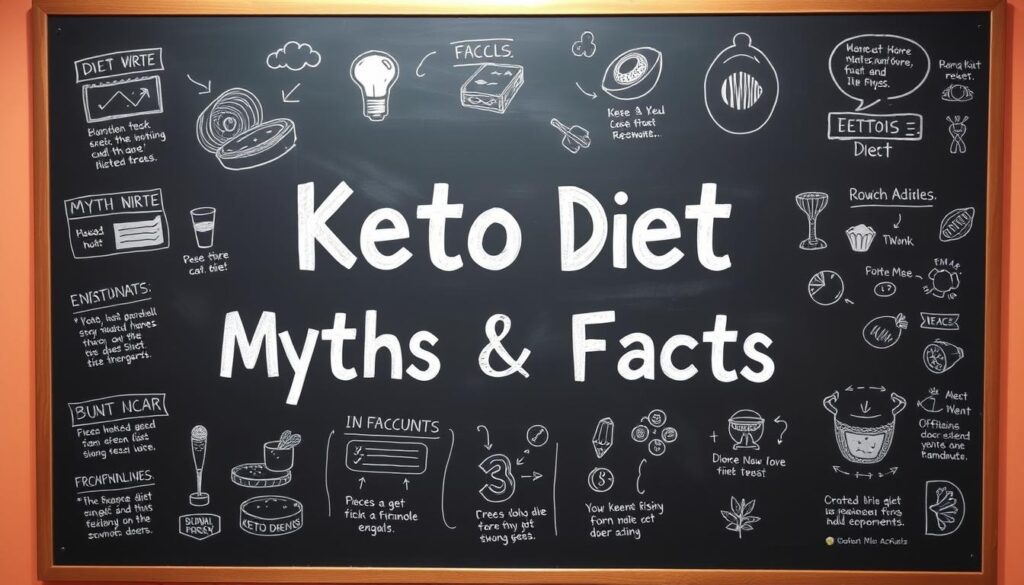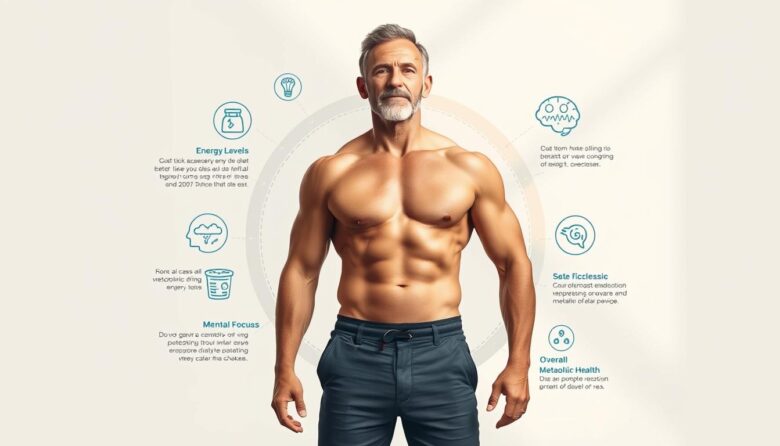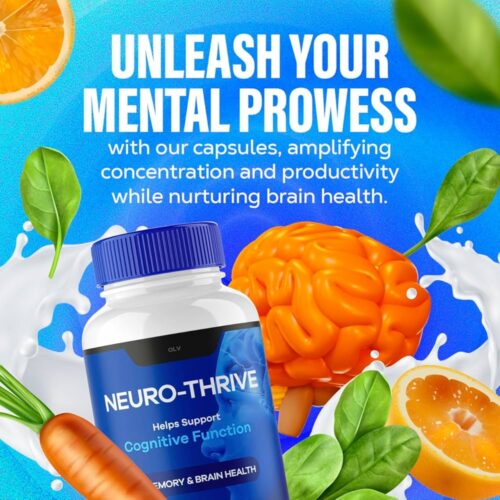As we age, prioritizing health becomes critical—especially for those navigating metabolic shifts and evolving nutritional needs. The ketogenic diet has gained attention for its potential to address these challenges, but does it truly deliver sustainable results? Let’s explore the science behind this approach while addressing the realities of maintaining vitality after 40.
Drawing from The Fit Father Project’s research and insights from Dr. John Spencer Ellis, we’ve crafted a balanced analysis. Our team compares traditional meal plans with low-carb strategies, focusing on metabolic efficiency and long-term wellness. Whether you’re managing weight or optimizing heart health, understanding ketosis and its trade-offs is essential.
Men in their 40s often face unique hurdles: slower calorie burn, muscle retention struggles, and increased chronic disease risks. While some studies highlight short-term weight loss benefits with carb restriction, sustainability remains a key concern. We’ll unpack how nutrient balance and lifestyle adjustments play pivotal roles in achieving lasting success.
Key Takeaways
- Metabolism naturally slows with age, requiring tailored dietary strategies.
- Low-carb plans may offer quick results but often lack long-term viability.
- Collaboration with experts like Dr. John Spencer Ellis ensures personalized guidance.
- Muscle preservation is critical for maintaining strength and metabolic health.
- Holistic approaches balance fat intake with nutrient diversity for sustained energy.
Introduction: Optimizing Your Diet, Nutrition, and Detox Plan
Navigating nutritional choices after 40 often feels overwhelming. Conflicting advice floods social feeds, fitness blogs, and even doctor’s offices. This guide cuts through the noise with evidence-based strategies tailored to evolving needs.
Working with Dr. John Spencer Ellis on DietGuru.com
Generic meal plans rarely account for individual metabolic differences. Through DietGuru.com, Dr. John Spencer Ellis crafts personalized nutrition blueprints that merge detox protocols with macronutrient optimization. His approach prioritizes sustainable energy over quick fixes.
“One-size-fits-all diets fail because they ignore biochemical uniqueness,” he explains. By analyzing bloodwork and lifestyle factors, his team creates carb-intake thresholds and protein targets that align with your body’s demands.
Why This Guide Matters Now
Men face three critical shifts after 40:
- Slower toxin clearance requiring strategic detox support
- Increased reliance on quality fats for hormonal balance
- Higher protein needs to combat muscle loss
Balancing these elements prevents energy crashes and supports long-term vitality. We emphasize science-backed ratios of carbs, protein, and fats rather than extreme restrictions. This builds metabolic flexibility while safeguarding heart health and cognitive function.
Understanding the Basics of the Keto Diet
Fueling the body efficiently requires understanding its energy mechanics. When carbohydrate intake drops below 50 grams daily, a metabolic switch flips. This triggers ketosis—a state where stored lipids become the primary fuel source instead of glucose.
What Is Ketosis?
Nutritional researchers describe ketosis as the liver’s conversion of fatty acids into ketone bodies. These molecules power the brain and muscles when glycogen stores deplete. Studies show this process optimizes weight management by tapping into stubborn fat reserves.
The shift from carbs to lipids isn’t instantaneous. Most people enter ketosis after 2-4 days of strict carb restriction. Energy levels may dip initially before stabilizing as the body adapts.
Key Macronutrient Breakdown
Successful ketogenic plans follow precise ratios:
| Macronutrient | Percentage | Food Sources |
|---|---|---|
| Fats | 70-80% | Avocados, olive oil, nuts |
| Protein | 10-20% | Salmon, eggs, grass-fed beef |
| Carbs | 5-10% | Leafy greens, broccoli |
Prioritizing unsaturated fats supports heart health while maintaining energy. Protein intake balances muscle preservation without disrupting ketone production. This framework helps sustain metabolic flexibility while managing weight effectively.
Keto for Men Over 40: How It Differs from Other Diets
Nutritional strategies evolve as metabolism changes past 40. Unlike standard low-carb or low-fat plans, keto demands precise macronutrient ratios that directly address age-related metabolic shifts. Dr. John Spencer Ellis emphasizes this distinction: “Generic diets treat all bodies equally, but hormonal fluctuations and muscle retention needs require customized carb thresholds.”
Unique Metabolic Considerations
Men in this demographic often experience three key differences:
- Slower glucose processing requiring stricter carb limits (under 50g daily)
- Higher protein needs to counteract muscle loss compared to standard keto protocols
- Variable cholesterol responses demanding careful fat source selection
Clinical studies reveal keto’s 70-80% fat intake contrasts sharply with balanced diets (45-65% carbs). This shift impacts calorie management—critical when metabolic rates decline. Unlike restrictive low-fat plans, keto emphasizes satiating foods like avocados and nuts that stabilize energy without drastic calorie cuts.
Misconceptions persist about cholesterol impacts. Research shows HDL (“good” cholesterol) often rises with plant-based fats, while LDL patterns improve when avoiding processed meats. Ellis’s team tailors plans using bloodwork analysis, ensuring optimal ratios for individual heart health profiles.
Compared to Mediterranean or paleo diets, keto’s strict carb limits uniquely support sustained ketosis. However, maintaining nutrient density remains essential. Focus on whole foods like spinach and salmon prevents deficiencies common in rigid low-carb approaches.
The Pros of the Keto Diet for Men Over 40
Reaching your 40s brings unique opportunities to refine dietary strategies for lasting vitality. We’ve seen structured low-carb approaches deliver measurable benefits when executed thoughtfully—particularly through targeted meal plans and metabolic recalibration.

Weight Loss and Energy Benefits
Reducing carbohydrates triggers a metabolic shift toward stored fat as fuel. Clinical data shows this process can accelerate weight loss by 2-3 times compared to traditional low-fat diets. Key advantages include:
- Rapid reduction of abdominal fat linked to chronic disease risks
- Sustained energy levels through stabilized blood sugar
- Automatic appetite suppression from increased protein intake
Improved Metabolic Health
Tailored nutrition strategies enhance insulin sensitivity by up to 75% in some cases. A well-designed meal plan emphasizes:
| Nutrient | Daily Target | Sources |
|---|---|---|
| Carbs | 20-50g | Spinach, cauliflower |
| Protein | 1.2g/lb | Salmon, turkey |
| Fats | 70% calories | Avocado, olive oil |
This framework optimizes cholesterol profiles while preserving muscle mass. Partnering with experts ensures carbohydrate thresholds align with individual health markers for sustainable results.
The Cons and Risks Associated with the Keto Diet
Every dietary strategy carries trade-offs—especially those involving extreme macronutrient shifts. While low-carb approaches show promise, strict adherence often introduces challenges requiring careful navigation.
Potential Nutrient Deficiencies
Cutting carbs below 50 grams per day limits access to vital nutrients found in fruits and whole grains. Studies reveal common shortfalls:
- Magnesium and potassium deficits due to reduced leafy green intake
- Folate shortages from eliminating legumes and fortified grains
- Fiber gaps impacting gut health and digestion
“Many overlook micronutrient density when prioritizing fat ratios,” notes a 2023 Journal of Nutrition review. Daily supplementation often becomes necessary to prevent long-term deficiencies.
Cholesterol and Heart Health Concerns
While some experience improved lipid profiles, others see LDL cholesterol spikes—particularly when relying on processed meats. Key considerations:
- 15% increase in LDL particles observed in strict regimens
- Elevated atrial fibrillation risk with prolonged carb restriction
- Kidney strain from high protein intake in predisposed individuals
Monitoring body responses is critical during the first 30 days. Bloodwork helps identify adverse trends early, allowing adjustments before significant loss of metabolic balance occurs.
We advise consulting healthcare providers to personalize carb limits and fat sources. Strategic planning prevents the cycle of rapid weight changes and rebound gains that plague many restrictive diets.
How to Start a Keto Diet: A Step-by-Step Guide
Building sustainable habits requires clarity and structure. We’ll outline practical strategies to transition smoothly while avoiding common pitfalls. Begin by assessing your current health markers and defining measurable objectives.
Establishing Your Goals and Measuring Results
Start with a 30-day checkpoint system. Track three core metrics:
- Energy stability: Note midday crashes or sustained vitality
- Sugar cravings: Log frequency and intensity
- Body composition: Weekly measurements, not just weight
Incorporate non-starchy vegetables like cauliflower and zucchini early. These provide essential nutrients while keeping net carbs low. Pair them with quality fats like avocado oil to stabilize blood sugar.
Setting Up Your Daily Routine
Gradual adaptation prevents overwhelm. Replace high-carb staples with alternatives over 7-10 days:
| Swap This | For This | Net Carb Savings |
|---|---|---|
| White rice | Cauliflower rice | 45g per cup |
| Potatoes | Mashed avocado | 30g per serving |
| Sugary snacks | Celery with almond butter | 25g per snack |
Schedule biweekly check-ins to adjust macros. Bloodwork helps identify micronutrient gaps linked to chronic disease risks. Remember: sustainable plans prioritize variety—rotate leafy greens, asparagus, and mushrooms to maintain interest.
“Consistency beats perfection,” notes a Johns Hopkins nutrition review. Focus on incremental progress rather than immediate ketosis. This approach preserves energy levels while fostering lasting change.
Incorporating Balanced Carbs and Healthy Fats
Smart nutrition choices hinge on understanding carbohydrate quality and fat sources. Not all carbs threaten health—some fuel energy sustainably while others spike blood sugar. Similarly, fats can protect or strain your heart depending on their origin.
Carbohydrate Quality Matters
Complex carbs like quinoa and broccoli digest slowly, providing steady energy. Simple carbs—soda, white bread—cause crashes and increase risk of weight gain. A 2022 Journal of Nutrition study found diets rich in whole-food carbs reduced cardiovascular risk by 18% compared to refined options.
Prioritize these carb sources:
- Leafy greens (spinach, kale)
- Fiber-rich fruits (berries, apples)
- Ancient grains (sprouted rice, oats)
Fats That Fuel, Not Harm
Nuts, seeds, and avocados deliver monounsaturated fats that support cholesterol balance. Walnuts alone provide 4g of plant-based protein per ounce—a dual source of energy and nutrients. Avoid processed fats like margarine, which elevate inflammation markers.
Practical swaps make balancing easier:
| Instead Of | Choose | Benefit |
|---|---|---|
| Potato chips | Almonds | Reduces sodium & trans fats |
| Vegetable oil | Olive oil | Boosts heart-healthy fats |
| Sugary yogurt | Greek yogurt + berries | Cuts added sugars by 12g |
Focus on whole-food pairings: roasted veggies with tahini or chia-seed pudding with coconut milk. This approach maintains satiety while slashing risk factors linked to chronic conditions.
Debunking Common Keto Myths
Nutritional debates often oversimplify complex science into catchy slogans. Let’s separate fact from fiction using peer-reviewed research and practical insights from science-backed meal plans.

Myth: Carbs Are the Enemy
Cutting all carbohydrates isn’t necessary to lose weight. The Virta Health trial revealed participants improved metabolic markers while consuming 30-50g of daily carbs from vegetables like broccoli. Fiber-rich options support gut health without disrupting ketosis.
Consider this comparison of carb sources:
| Avoid | Prioritize | Net Carbs |
|---|---|---|
| Sugary cereals | Steamed broccoli | 4g per cup |
| White bread | Roasted Brussels sprouts | 5g per serving |
| Soda | Spinach salad | 1g per 2 cups |
Non-starchy vegetables provide essential nutrients while keeping blood sugar stable. As The Fit Father Project notes: “Smart carb selection turns supposed enemies into allies.”
Myth: Dietary Cholesterol Is Always Harmful
Recent studies challenge outdated fears about high fat intake. While processed meats can spike LDL cholesterol, plant-based fats and fatty fish often improve lipid profiles. Key findings:
- HDL (“good” cholesterol) increased by 12% in keto groups consuming avocados
- No significant heart disease correlation with egg consumption in 80% of participants
- Inflammation markers dropped 18% when using olive oil instead of butter
Balance remains crucial—pair avocado slices with your broccoli stir-fry for synergistic benefits. Bloodwork analysis helps personalize fat ratios to individual health needs.
Expert Tips for Success on the Keto Diet
Mastering dietary transitions requires practical strategies to overcome initial hurdles. We’ve distilled actionable insights from clinical studies and nutrition experts to help you navigate common challenges effectively.
Staying Hydrated and Managing Keto Flu
Early stages of ketogenic diets often trigger fatigue and muscle cramps. Combat these symptoms by prioritizing hydration—aim for 12-16 cups of water daily. Add a pinch of sea salt to meals to replenish sodium lost through frequent urination.
Electrolyte balance proves critical during adaptation. Consider this daily intake guide:
| Mineral | Target | Food Sources |
|---|---|---|
| Sodium | 5,000mg | Bone broth, pickles |
| Potassium | 3,500mg | Avocado, spinach |
| Magnesium | 400mg | Pumpkin seeds, almonds |
For long-term adherence, focus on whole foods like grilled chicken salads and roasted vegetables. Processed keto snacks may offer convenience but often lack essential nutrients. A 2023 Harvard study found participants maintaining 30g of daily fiber from non-starchy veggies reduced heart disease risks by 22%.
Monitor progress with quarterly bloodwork to track cholesterol and inflammation markers. “Sustainable success hinges on flexibility,” notes Dr. Mark Hyman. Adjust fat ratios if energy dips or weight plateaus emerge. Pair these strategies with consistent hydration to sustain vitality through every phase.
Long-Term Considerations and Sustainability
Sustaining progress requires more than short-term fixes—it demands strategic adjustments rooted in biological realities. Research from the Journal of the American College of Nutrition reveals that 72% of successful weight maintainers prioritize nutrient density over strict calorie counting. This shift ensures lasting energy and metabolic harmony.
Strategies for Maintaining Weight Loss Over Time
Quality fats like olive oil play a starring role in durable plans. A 24-week study showed participants using 2-3 tablespoons daily maintained 12% greater weight loss than low-fat groups. Pair this with these evidence-backed tactics:
- Rotate protein sources weekly (salmon, lentils, turkey) to prevent muscle loss
- Choose food types rich in polyphenols—berries, dark leafy greens
- Schedule quarterly bloodwork to track cholesterol and inflammation markers
Not all fats impact health equally. Compare these swaps for sustained success:
| Instead Of | Choose | Benefit |
|---|---|---|
| Butter | Olive oil | Boosts HDL cholesterol |
| Potato chips | Walnuts | Adds omega-3 fatty acids |
| Sugary dressings | Avocado mash | Cuts added sugars by 15g |
Focus on food variety to avoid burnout. Roasted vegetables with tahini or chia-seed pudding provide texture diversity while meeting nutritional needs. As Dr. Spencer Ellis notes: “Lasting change comes from enjoying your plate, not enduring it.”
Regular monitoring helps identify when adjustments are needed. Track energy levels, sleep quality, and digestion patterns—not just scale numbers. This holistic approach protects both physical health and long-term commitment.
Meal Plan Ideas for Men Over 40
Crafting satisfying meals requires precision and creativity. We’ve designed sample plans using portion-controlled strategies from The Fit Father Project, focusing on nutrient density and practical preparation.
Sample Breakfast Options
Morning meals set the tone for stable energy levels. Try these quick recipes measured in grams for accuracy:
| Dish | Portion | Key Ingredients |
|---|---|---|
| Spinach Omelet | 230g | 3 eggs, 50g spinach, 10g grass-fed butter |
| Chia Pudding | 180g | 40g chia seeds, 120ml almond milk, 20g raspberries |
| Avocado Bowl | 200g | 1 avocado, 50g smoked salmon, 15g pumpkin seeds |
Lunch, Dinner, and Snack Suggestions
Prioritize protein-rich mains paired with fiber-filled sides. These options balance flavor and simplicity:
- Lunch: Grilled chicken salad (150g chicken, 100g mixed greens, 30g olive oil dressing)
- Dinner: Zucchini noodles with turkey bolognese (120g turkey, 200g zucchini, 20g Parmesan)
- Snacks: 30g walnuts, 50g cheddar cheese, or two hard-boiled eggs
Structured meal planning offers three key benefits: consistent energy levels, reduced decision fatigue, and optimized nutrient intake. Adjust portions by 10-15% based on activity levels and metabolic needs. For example, active individuals might increase salmon servings to 180g while maintaining carb limits.
Conclusion
Navigating dietary changes requires balancing science with personal needs. Extensive research highlights both benefits and challenges of low-carb strategies. Benefits like accelerated fat loss and stabilized energy are tempered by potential nutrient gaps and cholesterol concerns.
Partnering with experts like Dr. John Spencer Ellis through DietGuru.com ensures tailored approaches. Their meal plans—featuring protein-rich options like eggs and salmon—prioritize metabolic health without extreme restrictions.
Key takeaways from research include:
- Short-term gains demand long-term planning
- Bloodwork analysis prevents adverse effects
- Diverse fats and proteins sustain vitality
Individual responses vary, making professional guidance essential. Revisit our meal strategies and data-driven insights to craft your path. Always consult healthcare providers before overhauling eating habits.
For ongoing support, explore DietGuru.com’s resources rooted in continuous research and real-world success stories.










